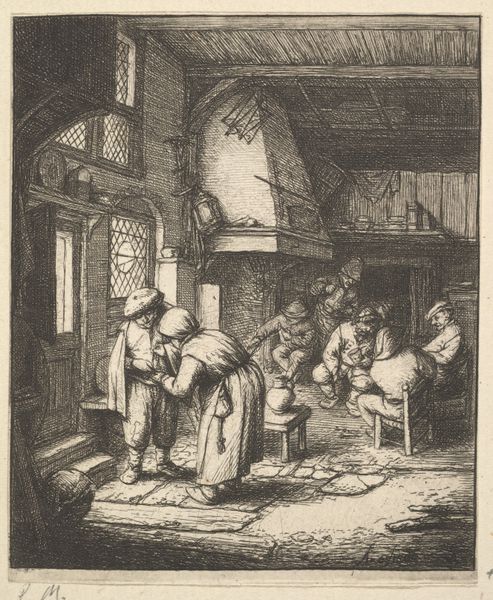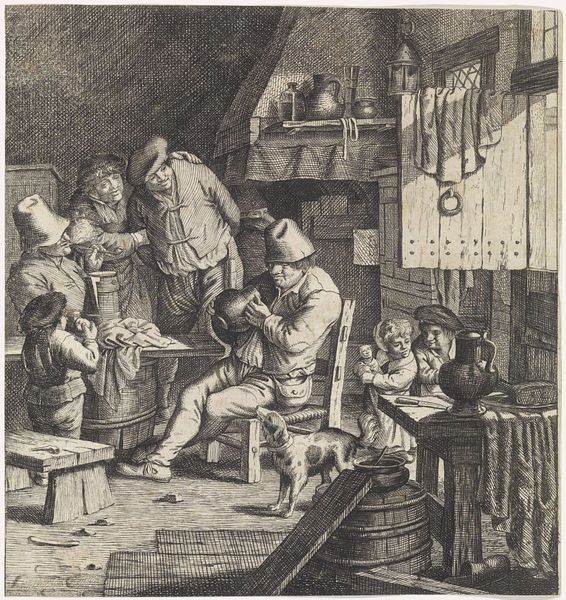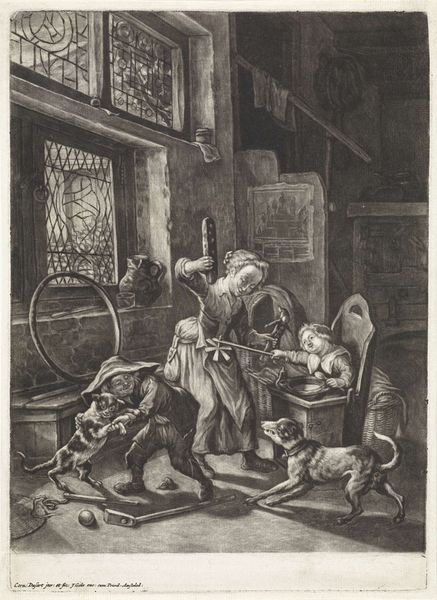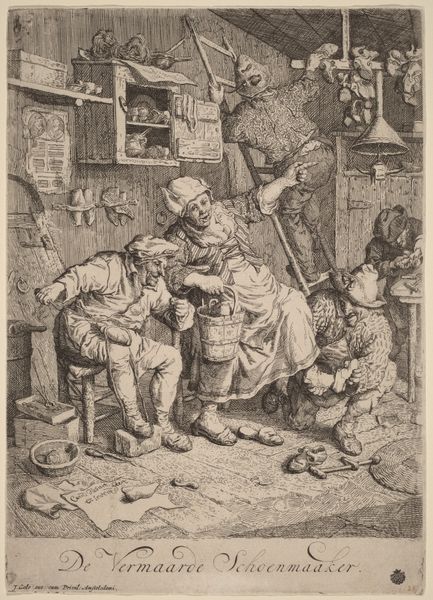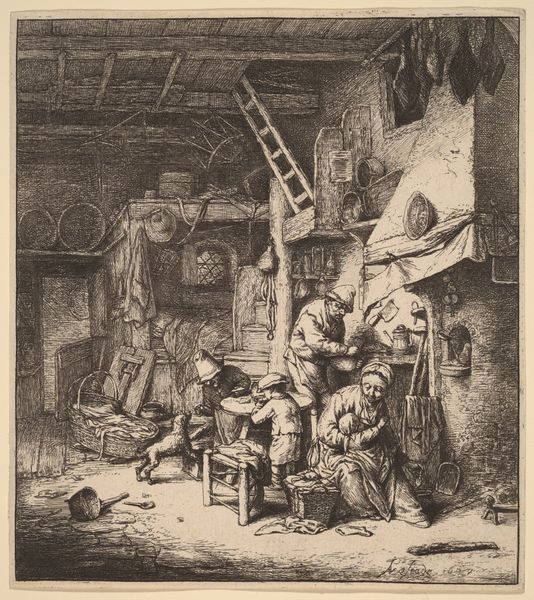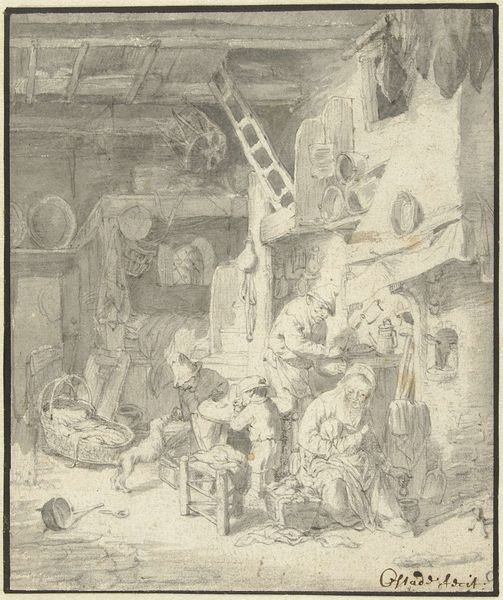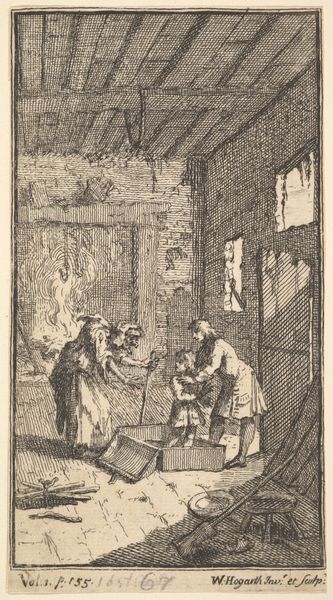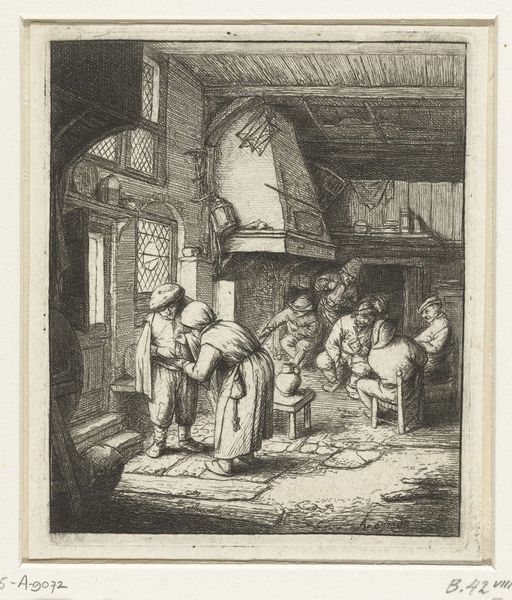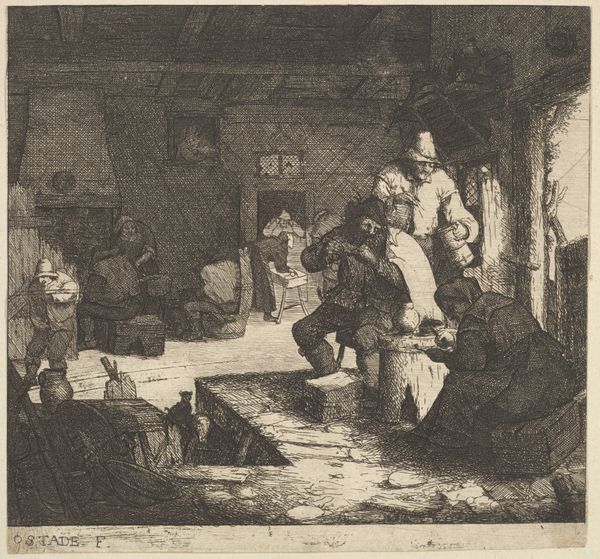
drawing, print, etching
#
drawing
#
dutch-golden-age
# print
#
etching
#
landscape
#
genre-painting
#
realism
Dimensions: Sheet: 3 15/16 × 3 1/4 in. (10 × 8.2 cm)
Copyright: Public Domain
Curator: Let’s spend a few minutes looking at this etching, "Peasant Paying His Bill," created by Adriaen van Ostade sometime between 1610 and 1685. You can find it here at the Metropolitan Museum of Art. Editor: Oh, instantly, I'm transported! There's such an intense concentration of daily life rendered in monochrome. It’s more than just an observation; it feels like a memory, a slightly foggy recollection of a bustling, warm interior. Curator: Precisely. Ostade was a key figure in the Dutch Golden Age, celebrated for his genre paintings depicting everyday life, especially among the peasant class. This piece is a perfect example. We see a transaction taking place, perhaps at an inn or tavern. Editor: The light is masterful for an etching! See how it pools and recedes? I'm drawn to the woman and the young man she’s paying. They’re framed by the doorway and become almost statuesque despite the crowded room behind them. Do you think it elevates them or freezes them? Curator: It's both, I believe. On one hand, the lighting draws our eye to them, underscoring their economic transaction as a fundamental social interaction. But in terms of history, consider the economic realities depicted. There are many debates to be had around whether artists were neutrally representing or actually contributing to societal attitudes. Editor: Ah, that's the tension! It's almost… exploitative? The slightly grotesque, cartoonish quality of the other patrons makes the quiet exchange seem almost noble in comparison. But is Ostade offering commentary or simply observing? It's devilishly tricky. Curator: These intimate scenes of daily commerce provided his patrons, often middle-class city dwellers, a glimpse into a rural life that was both familiar and foreign. There’s often some measure of romanticizing or editorializing on that, but the commercial demand to it remained true, and he continued etching throughout his career. Editor: I'm leaving with a sense of both wonder and discomfort. It's a brilliant slice of life but with an awareness of its own constructed nature. The artist captures this fleeting moment, reminding us to look closely at all we see, or all that we assume to know about what we see. Curator: Absolutely. Ostade offers a lens through which we can consider art's ability to reflect—and refract—social realities across the ages.
Comments
No comments
Be the first to comment and join the conversation on the ultimate creative platform.
